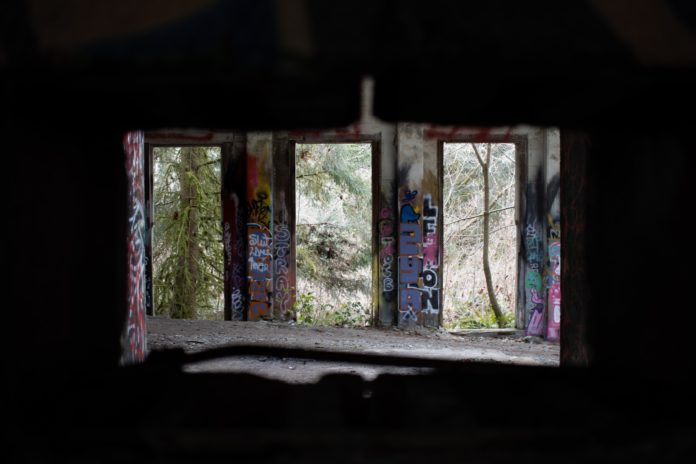Have you ever come across an abandoned site on Vancouver Island?
It most likely caught your eye and sparked your curiosity.
Why were these places abandoned? What happens to them after everyone has left?
They’re eerie, empty and forgotten.
Urbex (Urban Exploration) is the exploration of manmade structures or hidden components of the manmade environment. Over time, urbex has become a popular hobby worldwide drawing in those curious about the history of these abandoned places and experiencing them for themselves.
Many hobbyists document their finds through photography.
An example of an Urbex hobbyist is Vancouver Island’s own West Coast Abandoned Adventures. The popular Facebook page, run by Colin Smith, documents the exploration of all things abandoned on Vancouver Island from cars, homes and more.
However, Urbex can be dangerous, with crumbling structures and violation of trespassing laws. Followers of Urbex adventurers are reminded to not share specific locations of new finds and to respect the sites themselves.
Victoria Buzz has created a list of 5 abandoned spots on Vancouver Island and their history:
Jordan River Houses
Did you know Jordan River experiences the strongest seismic activity of anywhere in Western Canada? The possibility of a big earthquake and its after effects are what caused many residents to abandon their oceanside homes.
About 12 kilometers from Jordan River sits the 100-plus-year-old Jordan River diversion dam, which provides a third of the Island’s power.
In December 2014, BC Hydro announced that an earthquake (reaching 8 or 9 on the Richter scale) would break the dam quickly, leaving residents without any chance of escaping the crushing flood.
As a result, all but one of the dozen homeowners left. By March 2017 demolition on the homes wrapped. There is still one home standing and remnants of others, leaving the area with a very quiet, desolate feel.
Jordan River Power Plant (Juan de Fuca)
https://www.instagram.com/p/BgVEgTnHBEq/?utm_source=ig_web_copy_link
Construction of the Jordan River Power Plant was completed in 1911 to accommodate the increasing power demands of a growing population on Vancouver Island. As new technologies emerged the power plant was abandoned. For the last thirty to forty years the power plant has sat empty, the forest slowly taking back the structure and graffiti covering the walls.
Several of the buildings and structures nearby are also boarded up.
The power plant was recently in the news when Sooke RCMP handed out COVID-19 fines there to a group holding a rave.
Deertrail Resort (Sooke)
If you’ve ever driven up the long road around the Sooke Potholes, you most likely were curious about the cement structure overlooking the Sooke river, now riddled with graffiti. The ruins are actually remnants of the incomplete Deertrail resort.
In 1980, the 160-acre lot was purchased by a developer from Victoria, with dreams of turning it into a resort. Plans included 200 luxury rooms, a pool and spa, and stone staircases built into the side of the canyon itself.
Unfortunately, the resort’s construction never saw completion. Since then, the construction was stripped down to it’s stonework. The remnants remain, as a memory of what almost was.
Tofino Canso Plane Crash (Tofino)
On February 12th 1945, the Royal Canadian Air Force Canso 11007 crashed shortly after take off due to an engine malfunction. Thankfully, the pilot and crew survived and were rescued eleven hours later.
The crash site has since become a popular hike for tourists.
Although the hike is fairly easy, only 5km in length with a 35 metre elevation gain, it is said to be extremely muddy year round. However, the trail is well marked and easy to follow.
Leechtown (near Sooke)
If you are intrigued by the ideas of ghost towns, Vancouver Island’s own Leechtown is perfect for you.
In 1864, members of the Vancouver Island Exploring Expedition (VIEE) found gold in the Leech River. Hundreds of miners flooded toward the site and after only four months there were six general stores, three hotels and at least thirty stores licenced to sell alcohol.
Leechtown was born.
However, only a year later, the gold rush began slowing down. Many of the 1,200 miners who moved to Leechtown moved on in search of more work.
The logging industry kept the town alive until the late 1950s. The last resident and miner of the town passed away in 1999.
Although there is not much left of Leechtown, many visitors come across various pieces of the past during their exploration.
During exploration, always remember to be cautious, stay on marked trails and do not trespass onto private property.



